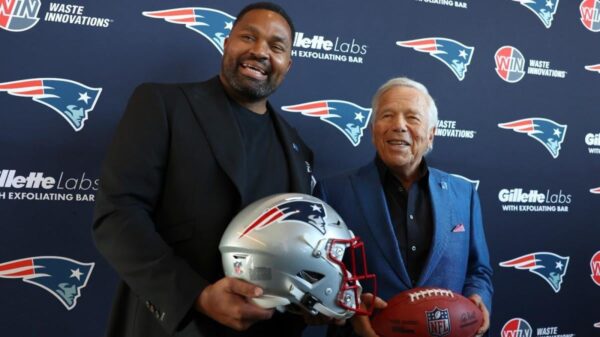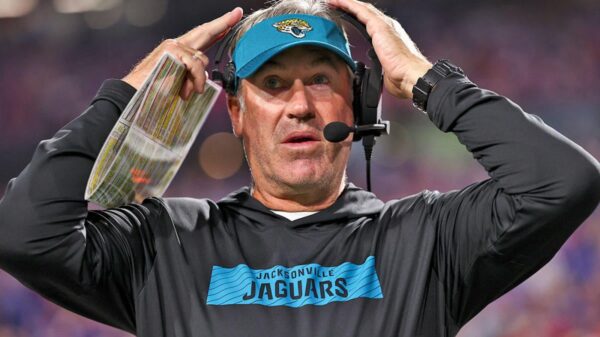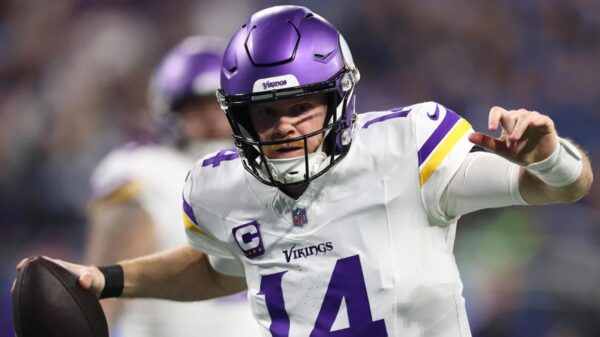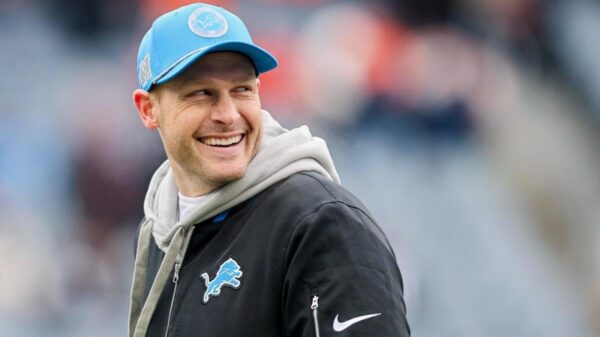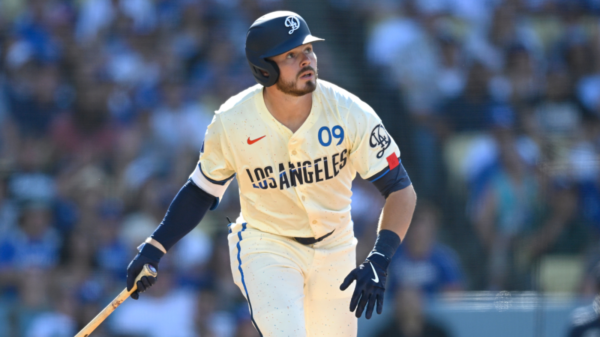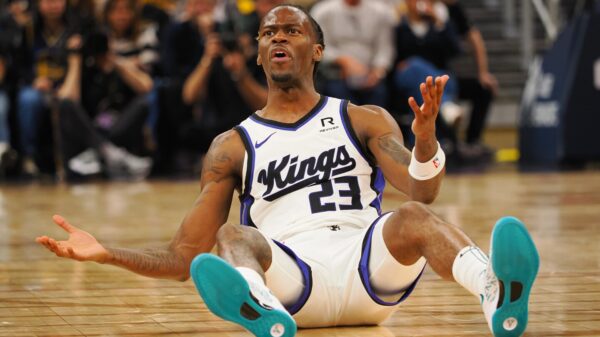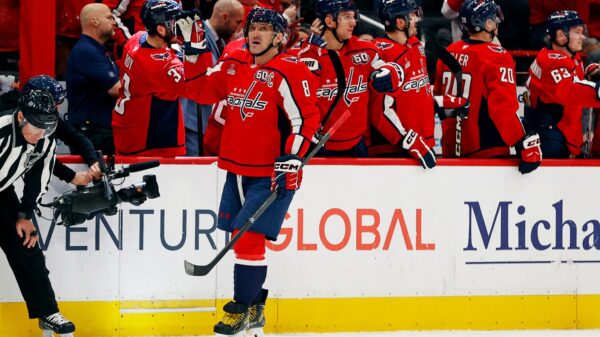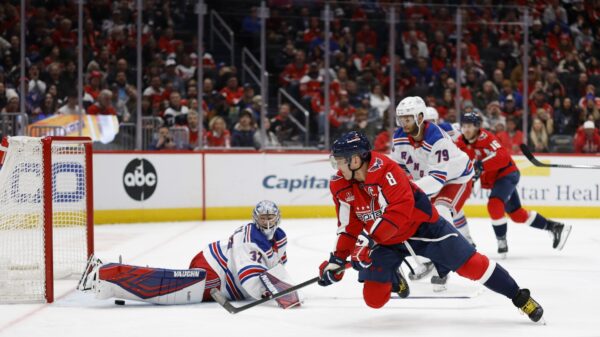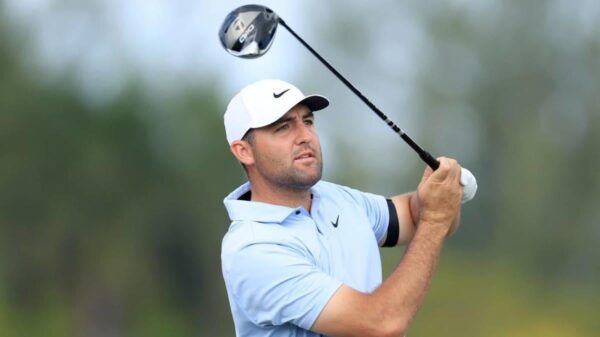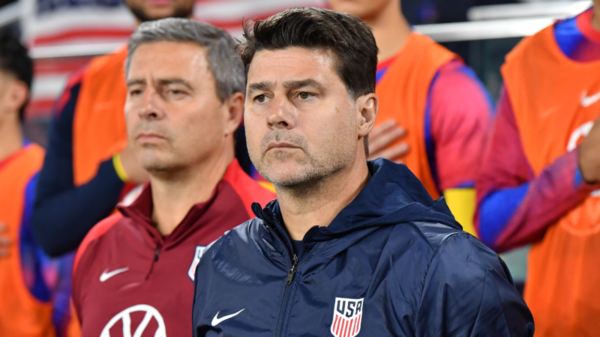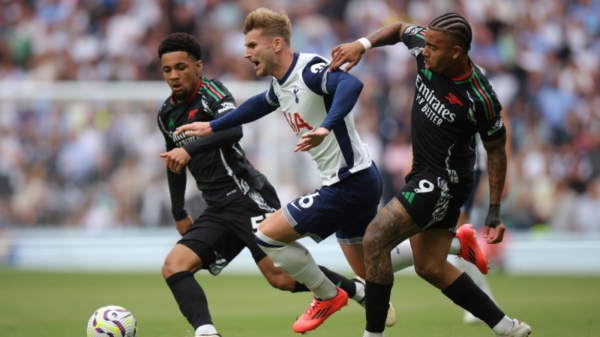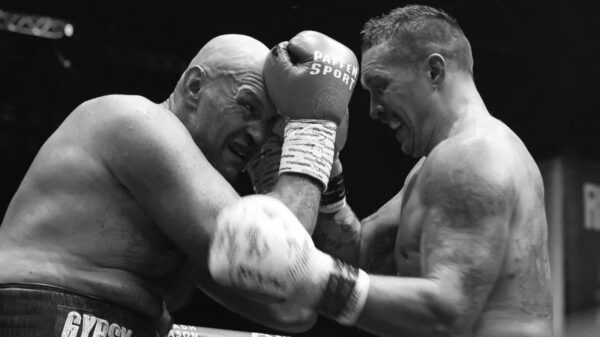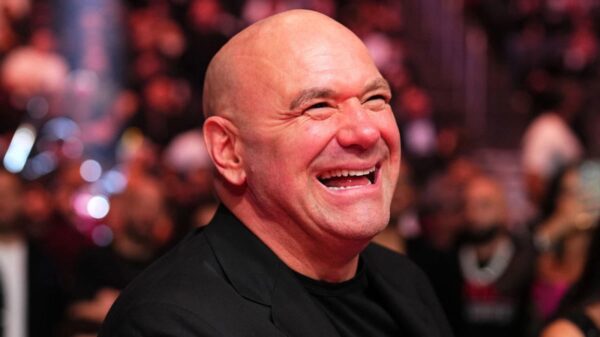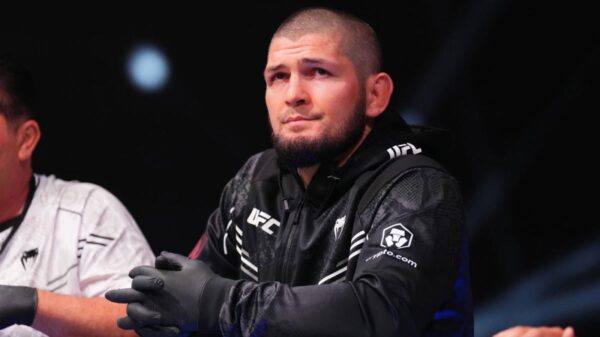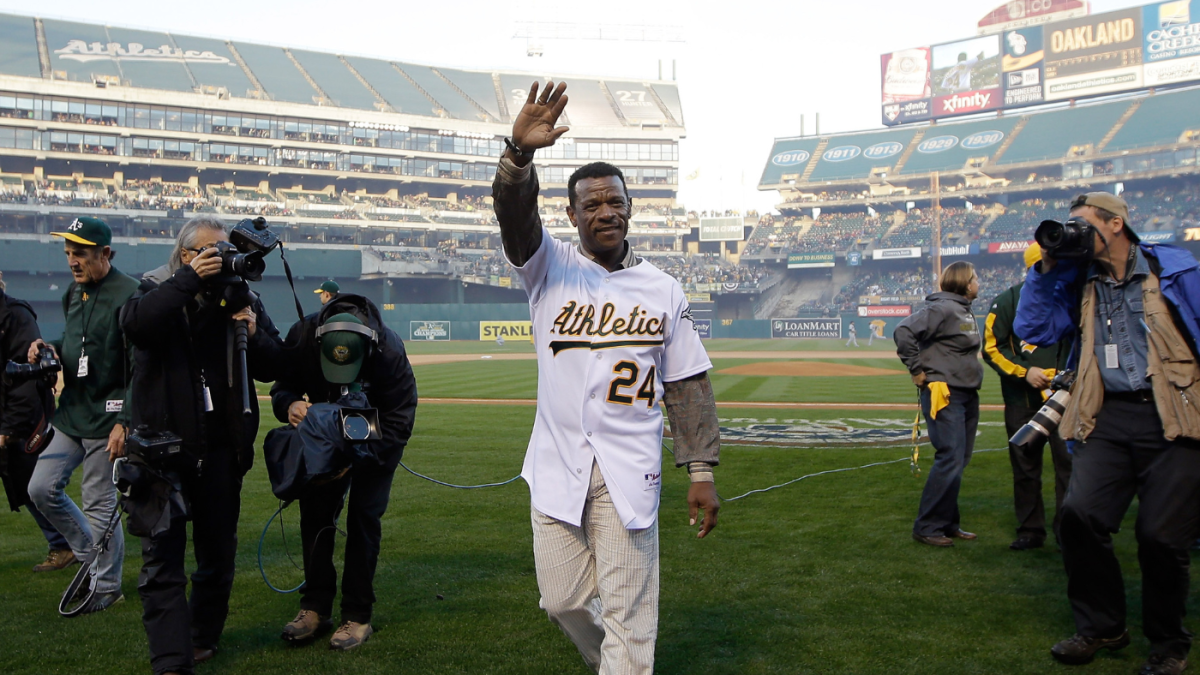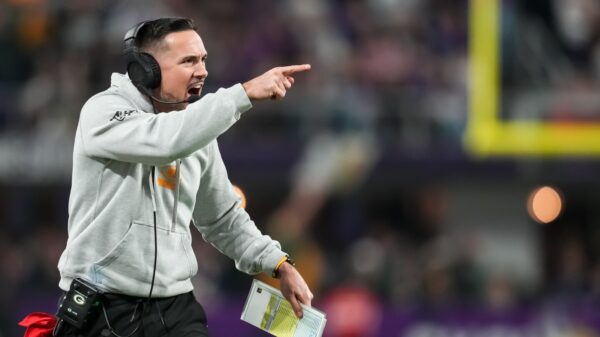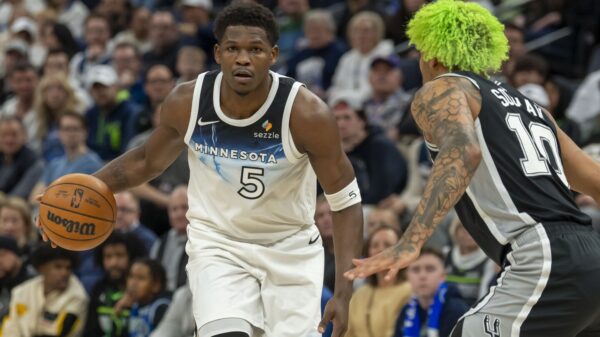The Athletics are doing more than close out the home portion of their 2024 schedule Thursday afternoon when they host the Texas Rangers; they will, for the final time, take their home field representing the city of Oakland. In a few days, when the season concludes, the Athletics will relocate to Sacramento to begin a multi-year layover. Eventually, once their new ballpark off the Las Vegas Strip is complete, they’ll nestle in Nevada.
Franchise relocation is among the nastier parts of professional sports these days. Generations of Oakland residents have grown up attending games and rooting for the Athletics. Countless ballpark workers became reliant upon the Athletics’ presence for gainful employment. Now, because of greed and business machinations they held little influence over, they’ll have to move on. There is no sentence or paragraph that can be constructed to make things right by those people, but they deserve acknowledgment.
What can be constructed is a tribute to the Oakland Athletics — emphasis on Oakland — and how pivotal they were to the modern baseball landscape. On and off the field, good and bad, to tell the story of contemporary Major League Baseball is to spend a lot of time centering the Oakland A’s.
As such, we here at CBS Sports wanted to take time to honor the Oakland Athletics’ significance during the franchise’s 56 years by the bay. Mind you, it’s difficult to sum up so much history in such a tidy manner; there are players, teams, and stories we’re omitting that we wish we could’ve mentioned or expanded upon here. That’s just how these things go.
Now, scroll with us as we say goodbye to big-league baseball in Oakland.
Countless stars, numerous championships
In case you missed it, longtime Athletics outfielder Rickey Henderson caught the ceremonial first pitch thrown by his daughter prior to last Friday’s game. It was a fitting beginning to the A’s last homestand: Henderson leading off for Oakland one final time.
Henderson’s presence was apt in other ways: the literal field at the Oakland Coliseum is named in his honor — and that’s for good reason, seeing as how he remains the best player in Oakland’s history.
Bill James wrote of Henderson in the “New Historical Abstract”: “If you could split him in two, you’d have two Hall of Famers.” James then described Henderson as “the greatest base stealer of all time, the greatest power/speed combination of all time (except maybe Barry Bonds), the greatest leadoff man of all time.” Small praise, huh?
Although Henderson appeared with nine different teams during his big-league career, his plaque in Cooperstown bears an A’s cap. They weren’t just his first team — drafting him from nearby Oakland Technical High School — they were the team he spent the most time with, appearing in parts of 14 seasons over five different tours of duty.
Henderson assembled much of his Hall of Fame career in Oakland. He won the 1990 AL Most Valuable Player Award, and he was honored with an All-Star Game nod on six occasions while with Oakland. Across more than 1,700 games in green and gold, he batted .288/.409/.430 with 167 home runs and 867 stolen bases. His 72.7 Wins Above Replacement are 20 more than any other player compiled in Oakland history.
Most productive players in Oakland history
(According to Baseball-Reference)
- Rickey Henderson, 72.7 WAR
- Sal Bando, 50.6
- Reggie Jackson, 48.6
- Mark McGwire, 42.9
- Bert Campaneris, 42.4
- Eric Chávez, 35
- Dwayne Murphy 31.7
- Tim Hudson, 31
- Barry Zito, 30.6
- Vida Blue, 29
The truth is, someone like Henderson cannot be reduced to mere statistics. He was too stylish on the field, and too quotable off it. He felt like a star because he was, and at times he felt more along the lines of a folk hero. As Tom Verducci wrote in 2003: “There are certain figures in American history who have passed into the realm of cultural mythology, as if reality could no longer contain their stories: Johnny Appleseed. Wild Bill Hickok. Davy Crockett. Rickey Henderson. They exist on the sometimes narrow margin between Fact and Fiction.”
There’s a reason why Howard Bryant’s recent Henderson biography described him as an American original: there never could be another player as brilliant nor as memorable.
If the legacy of Oakland baseball must be tied to a single player, there are few better choices than Henderson. But down the road, long after the Athletics have settled into their new Las Vegas ballpark, we can only hope that inquisitive souls dare to dive deeper into Oakland’s franchise history. Those who do will be rewarded with the discovery of a rich collection of talented ballplayers and outrageous characters.
Reggie Jackson, christened as “Mr. October” later in his career, had many of his best seasons with the Athletics, including his MVP-winning 1973 campaign. The Bash Brothers, Mark McGwire and Jose Canseco, combined for five individual 40-homer seasons during their time in Oakland. On the mound, Barry Zito, Tim Hudson, and Mark Mulder formed the backbone of the early 2000s Athletics — even if the book and movie associated with that era failed to recognize as much.
That’s an impressive group without mentioning a slew of others who we could devote paragraph after paragraph to: Sal Bando, Vida Blue, Catfish Hunter, Dave Stewart, Rollie Fingers, Dennis Eckersley, Jason Giambi, Coco Crisp… we could keep going — that’s how many memorable talents helped keep the Athletics culturally and competitively relevant.
And the A’s were undoubtedly competitively relevant. They won four World Series titles, including three in a row from 1972-74, while amassing six American League pennants and 21 total playoff appearances. Stars and titles define franchises; Oakland saw its share of both.
Relocation was always a threat
In the introduction, we described relocation as one of the nastiest parts of modern professional sports.
The Athletics themselves are a great example of the zero-sum game that cities (and fan bases) engage in with one another to satisfy now-billionaire owners. Remember, Las Vegas has gained the Athletics at Oakland’s expense… just as Oakland gained the Athletics at Kansas City’s expense… just as Kansas City gained the Athletics at Philadelphia’s expense… just as someday, some city out there may gain the Athletics at Las Vegas’ expense. It’s a vicious cycle unbound by history or success.
The Athletics’ history informs the fleeting nature of the business. Just consider what Charles Finley said and did after moving the Athletics from Kansas City to Oakland.
“I bought the team in Kansas City. I have brought it to Oakland. There is a difference. I took the only team I could get. I had no choice where it was,” Finley said, according to Jason Turbow’s book, “Dynastic, Bombastic, Fantastic: Reggie, Rollie, Catfish, and Charlie Finley’s Swingin’ A’s.” “Bringing it to Oakland was my choice. Once I make a decision, I stand by it. I give my word of that. I will move to Oakland. I will move my family to Oakland. I will keep my team in Oakland. And the A’s will succeed here.”
Not only did Finley never move to Oakland, but within a year he reversed his decision to put “Oakland” on the uniforms. The Athletics did remain in Oakland rather than relocate again — but it wasn’t for a lack of trying on Finley’s part. A decade after giving his word on the A’s being rooted in Oakland, Finley reached an agreement with an oil executive named Marvin Davis who intended to move the team to Denver.
An Oakland-Alameda County Coliseum Authority lawsuit stopped the deal from being completed on the grounds that the Athletics had another decade remaining on their lease.
It is no exaggeration to suggest the specter of relocation has haunted the Athletics almost since the day they moved to Oakland. The Sword of Damocles has hung over Oakland’s head for so much that it seemed permanently affixed to a sturdy, if unseen structure.
Flash forward another dozen or so years from Finley’s failed bargain, and the Athletics were again threatening to move if they didn’t get a new ballpark. (Earlier this year, we talked to superagent Leigh Steinberg about how he helped keep the A’s in town.) Those efforts would continue, with the Athletics failing time and again to secure their new ballpark.
When the Athletics began their public dalliance with Las Vegas, it was easy to shrug it off as more empty posturing; when they announced their intent to move, it felt unreal and wrong, a bit gone awry. But no, the Athletics — in Oakland and elsewhere — are a great example of how professional sports teams are more than willing to love them and leave them once there’s money to be found elsewhere.
Oakland inadvertently spurred MLB free agency
Ironically, Finley’s tenure as Athletics owner saw him inadvertently introduce an era in which players could pursue money wherever it took them by ushering in free agency.
In 1974, a couple years after Curt Flood challenged baseball’s reserve clause in the Supreme Court, reigning AL Cy Young Award winner Jim “Catfish” Hunter was made baseball’s first modern free agent after Finley breached the terms of his contract by failing to issue monthly insurance annuity payments on time. Here’s more, courtesy of the Baseball Hall of Fame’s accounting:
Hunter’s contract with the A’s was straightforward. He was owed $100,000 total in 1974, with $50,000 to be paid to him directly from Finley and the remaining half to be issued in monthly payments on an insurance annuity. Finley, however, was late in delivering the insurance payments, creating strife between owner and pitcher.
[…]
When Finley rebuffed, Marvin Miller, head of the Major League Baseball Players Association, seized the opportunity. Miller had been following the dispute closely, and recognized that Finley’s breach of contract represented a chance to take Hunter’s case to a neutral arbitrator. If the arbitrator sided with Hunter, the star pitcher’s contract could be voided.
An arbitrator would indeed free Hunter of his obligation to the Athletics, allowing him to shop his services around to various bidders. In a testament to how much the open market can be leveraged, Hunter would turn his fortuitous outcome into a fortune by signing a five-year pact worth $3.2 million with the New York Yankees.
Barely a year later, pitchers Dave McNally and Andy Messersmith would turn to the same arbitrator, whose ruling ended MLB’s reserve clause and created free agency.
Finley, for his part, offered a solution to the rising free-agent costs. He wanted to make every player in the league a free agent after each season. As Miller later wrote in his book, Finley “seemed to be the only one smart enough to recognize that opening the floodgates by making all players free agents would work to the owners’ advantage by holding salaries down.” The other owners, obviously, did not go along with the idea.
The modern closer, ‘Moneyball’ and beyond
The Athletics weren’t just clumsy innovators off the field. They did their fair share of calculated spearheading between the lines, establishing the modern closer and ushering in the modern analytics revolution decades ago.
We’ll begin with the end. Late in Dennis Eckersley’s career, manager Tony La Russa decided to deploy him as the A’s closer. La Russa would settle on using him mostly for an inning in save situations. Eckersley proved adept at closing out games, compiling 51 saves across 69 appearances in 1992, a showing that would earn him the Cy Young Award and help transform bullpen usage across the league to this day.
Getty Images
While you can argue that such recognition belongs instead to John Franco or Lee Smith, Eckersley deserves props for his bluntness. He would later say of the role he helped popularize that closing was “not as tough as you think.” He added: “You can find somebody to do it. You could groom somebody to do it who’s on the staff, if you manage it the right way. I mean, think about it: the tougher job is to come in with guys on base, because he’s got to be quicker to the plate and he has to hold runners on.”
Coincidentally, the A’s would soon embrace Eckersley’s thoughts on the closer role by becoming one of the teams likeliest to avoid paying for saves. As Michael Lewis wrote in “Moneyball”:
“The central insight that led [Billy Beane] both to turn minor league nobodies into successful big league closers and to refuse to pay them the many millions a year they demanded once they became free agents was that it was more efficient to create a closer than to buy one. Established closers were systematically overpriced, in large part because of the statistic by which closers were judged in the marketplace: ‘saves.'”
In the two decades since “Moneyball” was published, it’s been turned into a movie by Hollywood and a holy text by the modern executive. The tools are much different now — more sophisticated, forward-focused on traits rather than past-focused on results — but the philosophy and commitment to exploiting inefficiencies remain in vogue.
Of course, the intense popularity of “Moneyball” has flattened and obscured some basic facts — like how the Athletics’ fascination with data far predates Beane’s time as general manager. In fact, the “Moneyball” revolution, if that’s what good branding has reduced it to being known as, actually dates back closer to 40 years than 20.
It was Beane’s predecessor, Sandy Alderson, who would read James’ yearly abstracts, and who stumbled upon Eric Walker’s similarly iconoclastic book “The Sinister First Baseman.” It was Alderson, too, who hired Walker to work in the Athletics front office, and who implemented his insights — among them the prioritization of on-base percentage — en route to perennially contending for pennants and World Series titles.
Time and distance have a funny way of obscuring the details. Before anyone knows it, there’ll be a generation of fans unfamiliar with the Athletics’ time in Oakland — just as most of today’s fans don’t recall them in Kansas City. Still, any sober analysis of the game in its current state can conclude this much: the Athletics may be leaving Oakland, but the legacy they forged there will live on for a great while to come.
Read the full article here

